The global cloud kitchen market is set to soar beyond $112 billion by 2030, reflecting a booming growth trajectory. This surge is being driven by the modern consumer’s demand for speed, convenience, and a seamless, digital-first dining experience, showcasing the evolution of cloud kitchen business models. In a world where online food delivery has become the norm, cloud kitchens have emerged as the ultimate game-changers, redefining how food businesses operate and expand.
A cloud kitchen, also known as a ghost kitchen or virtual kitchen, is a food production facility that operates solely for online orders. Unlike traditional restaurants that invest heavily in dine-in spaces, ambiance, and front-end staffing, cloud kitchens function as streamlined culinary hubs dedicated to delivery. This model offers lower overhead costs, operational flexibility, and the ability to scale efficiently—all while meeting the growing demand for quality food delivered straight to customers’ doorsteps.
For aspiring restaurateurs and established food businesses alike, cloud kitchens present an unprecedented opportunity to thrive in an increasingly digital world. By eliminating the need for prime real estate and leveraging technology-driven operations, entrepreneurs can focus on innovation, efficiency, and customer satisfaction. In this guide, we’ll explore everything you need to know about launching and running a successful cloud kitchen business—from ideation to execution, marketing strategies, and growth hacks. Let’s dive into the future of the food industry.
What is a Cloud Kitchen?
A cloud kitchen is a professional food preparation and cooking facility designed exclusively for food delivery. Unlike traditional restaurants, cloud kitchens do not provide dine-in services, allowing them to operate with significantly lower costs. Orders are placed online through third-party delivery platforms or a brand’s dedicated website and mobile application.
Types of Cloud Kitchens
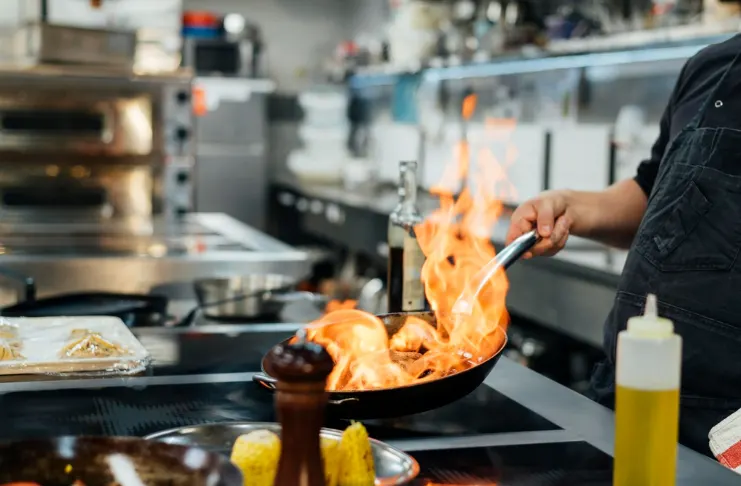
Cloud kitchens come in various formats, depending on the business model. Here are some of the most common types:
- Standalone Cloud Kitchen: A single-brand kitchen operating from a centralized location.
- Multi-Brand Cloud Kitchen: A single kitchen operating multiple brands under one roof to cater to different customer preferences.
- Aggregator-Owned Cloud Kitchen: Third-party food delivery aggregators like Uber Eats or DoorDash run their own cloud kitchens to host multiple restaurant brands.
- Co-Working Cloud Kitchen: Shared kitchen spaces rented out to multiple food businesses to reduce operational costs.
- Outsourced Cloud Kitchen: A kitchen outsourcing food production to external brands or suppliers while focusing on branding and marketing.
Understanding the different types of cloud kitchens allows entrepreneurs to choose the model that best fits their vision and resources.
Key Trends
The cloud kitchen industry has experienced significant growth, with projections indicating continued expansion in the coming years.
In 2025, the global cloud kitchen market size is estimated at $81.94 billion and is forecasted to reach approximately $225.76 billion by 2034, reflecting a compound annual growth rate (CAGR) of 11.92% during this period.
This growth is driven by factors such as the increasing preference for convenient dining options, busy lifestyles, urbanization, and the rise of food delivery apps. Additionally, technological advancements are playing a crucial role in shaping the future of cloud kitchens. By 2025, it’s anticipated that 30% of cloud kitchens will implement AI-based plate-specific offerings to enhance customer satisfaction and operational efficiency.
The Asia-Pacific region is leading this expansion, with the market size surpassing $35.14 billion in 2024 and expected to grow at a CAGR of 12.04% during the forecast period. This rapid growth is attributed to the increasing adoption of cloud kitchen models in countries like India and China, where urbanization and smartphone penetration are on the rise.
Investments in the cloud kitchen sector have also been substantial. For instance, in 2024, Rebel Foods raised $210 million to expand into U.S. and Middle Eastern markets, highlighting the industry’s attractiveness to investors.
These insights underscore the dynamic evolution of the cloud kitchen industry, driven by technological innovations, changing consumer behaviors, and significant investments.
Benefits of a Cloud Kitchen Business
Unlike traditional restaurant owners who require heavy investments in prime real estate, elaborate décor, and extensive front-end staff, cloud kitchens offer a more cost-effective and scalable business model. They provide a streamlined, tech-driven approach to food service, ensuring higher profitability, operational efficiency, and limitless growth potential.
For food entrepreneurs and existing restaurateurs looking to expand their reach, cloud kitchens present an opportunity to tap into the booming online food delivery market. With the growing preference for on-demand food services, businesses that adapt to this digital-first approach can scale quickly while maintaining cost efficiency. Whether you’re launching a brand from scratch or optimizing an existing one, the benefits of a cloud kitchen business are undeniable. Let’s explore why this model is a game-changer in the F&B industry.
1. Lower Investment and Overhead
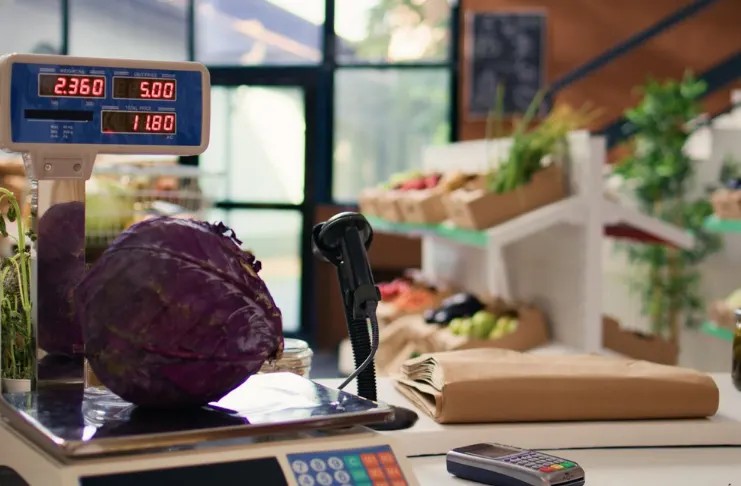
Traditional restaurants demand significant capital to secure high-footfall locations, furnish dining spaces, and employ front-of-house staff. Cloud kitchens eliminate these financial burdens by operating solely on food preparation and delivery. Since there’s no need for an expensive storefront, businesses can focus on quality ingredients, packaging, and marketing without stretching their budget.
Additionally, cloud kitchens can be set up in cost-effective locations, such as industrial areas or shared kitchen spaces, significantly reducing rent expenses. Without the need for waitstaff, hostesses, or large customer service teams, labor costs are also minimized. This lean operational model ensures that more resources can be allocated toward enhancing food quality and delivery logistics, ultimately boosting profitability.
Tips:
- Opt for shared or commissary kitchens to minimize startup costs.
- Invest in automated kitchen equipment to reduce labor costs and increase efficiency.
- Negotiate rental terms with property owners to secure the best rates for long-term operations.
2. Higher Profit Margins

A major advantage of cloud kitchens is their ability to operate at higher profit margins compared to traditional restaurants. By cutting out expenses related to real estate, interior design, and front-end staffing, businesses can channel more revenue toward improving food quality, branding, and customer acquisition.
Since cloud kitchens focus exclusively on takeout and delivery, they avoid the additional costs associated with in-house dining, such as furniture maintenance, tableware, and extensive cleaning staff. Moreover, businesses can optimize ingredient sourcing, minimize waste, and efficiently manage portion control to further enhance profitability.
Tips:
- Implement data-driven pricing strategies to maximize revenue while maintaining affordability.
- Use AI-powered inventory management systems to track and reduce food waste.
- Offer combo deals or bundle meals to increase the average order value.
3. Operational Efficiency
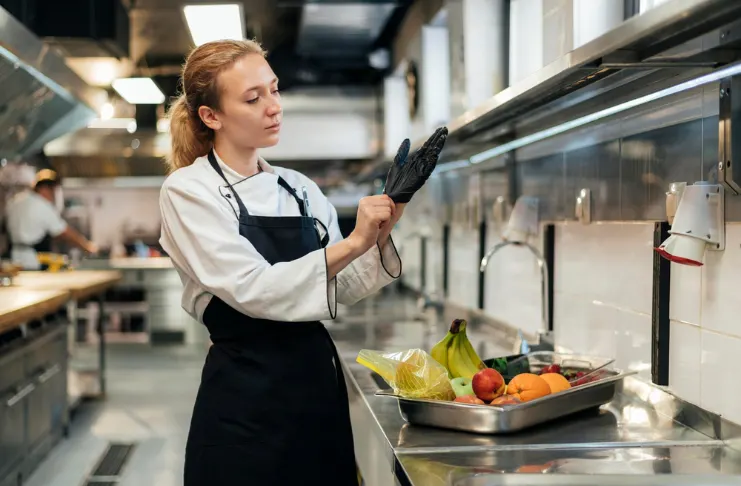
Cloud kitchens are designed for maximum efficiency, allowing businesses to focus on high-speed production and seamless order fulfillment. Unlike traditional restaurants that juggle dine-in and delivery operations, cloud kitchens dedicate their entire workflow to digital orders, reducing errors and wait times.
By integrating kitchen management software, automated cooking equipment, and real-time order tracking, businesses can significantly streamline their operations. A well-structured cloud kitchen minimizes bottlenecks in food preparation, ensures quick dispatch, and enhances customer satisfaction. Additionally, utilizing a point-of-sale (POS) system can help centralize order processing, track sales data, and manage inventory more effectively.
Tips:
- Use kitchen display systems (KDS) to optimize order management and preparation.
- Set up a standardized workflow to handle high order volumes efficiently.
- Implement AI-driven demand forecasting tools to anticipate peak order times and optimize resource allocation.
- Utilize a POS system to seamlessly integrate orders from multiple delivery platforms and track business performance.
4. Scalability and Flexibility
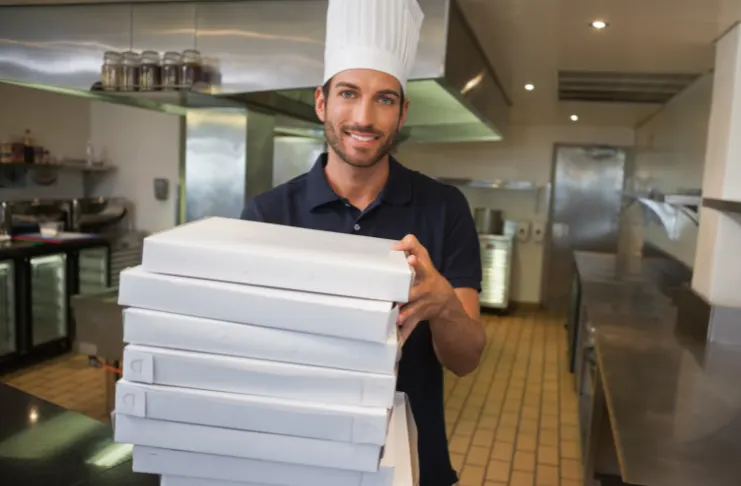
One of the most compelling advantages of a cloud kitchen is its ability to scale rapidly. Traditional restaurants are bound by physical constraints, making expansion costly and time-consuming. In contrast, cloud kitchens can easily replicate their model in different locations with minimal setup costs.
Businesses can also experiment with multiple virtual brands under one roof, catering to different cuisines and customer preferences without opening separate physical locations. This flexibility allows cloud kitchens to adapt quickly to market trends, adjust menus based on demand, and reach a broader audience without heavy capital investment.
Tips:
- Launch multiple virtual brands to target different customer demographics from the same kitchen.
- Use data analytics to identify high-demand areas and open additional cloud kitchen outlets strategically.
- Test new menu items digitally before committing to full-scale production.
5. Digital-First Approach
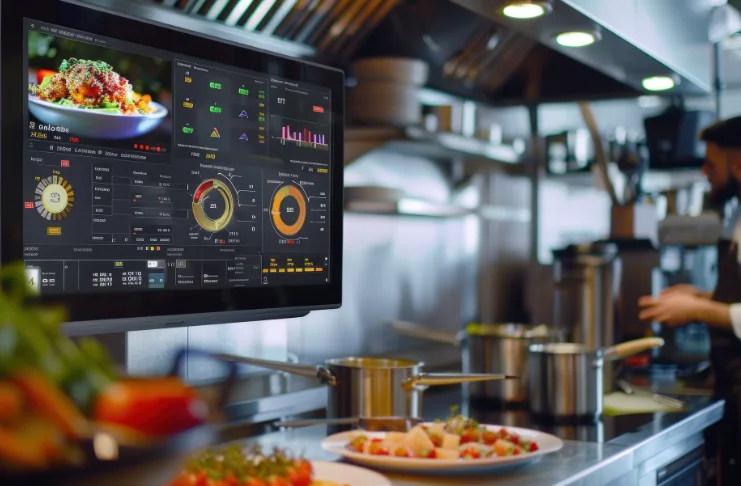
Since cloud kitchens operate exclusively through online orders, they are inherently positioned for success in today’s digital landscape. A strong online presence, supported by customer data and backed by strategic digital marketing efforts, is essential for attracting and retaining customers.
From leveraging social media advertising to optimizing listings on food delivery platforms, cloud kitchens can maximize their visibility and reach a larger customer base. With the right digital marketing strategies, businesses can drive customer engagement, increase brand loyalty, and generate consistent revenue without relying on physical foot traffic.
Tips:
- Invest in a visually appealing website with an easy-to-use online ordering system.
- Optimize menus with SEO-friendly descriptions to rank higher on food delivery platforms.
- Use targeted social media ads and influencer marketing to boost brand awareness.
Cloud kitchens are redefining how the food industry operates by merging technology with convenience, efficiency, and cost-effectiveness. As food delivery continues to dominate consumer preferences, businesses that embrace this model will thrive in the competitive F&B landscape.
EXPERT INSIGHTS
| As Michael Schaefer, Global Lead of Food & Beverage at Euromonitor International, aptly puts it: “Delivery is no longer an add-on; it is a fundamental part of the restaurant business. Brands that innovate in this space will lead the future of dining.” |
Challenges of Running a Cloud Kitchen
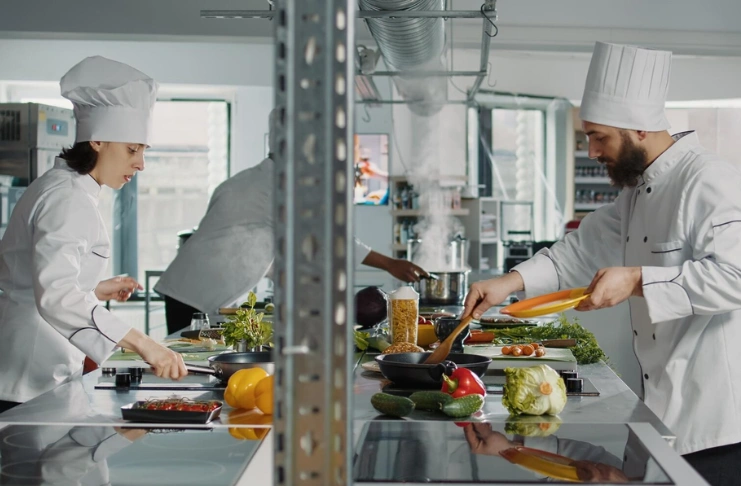
While cloud kitchens offer multiple benefits compared to a traditional physical restaurant, they also come with challenges that entrepreneurs must navigate.
Running a cloud kitchen may seem like a dream opportunity, but it’s not without its fair share of hurdles. The digital-first nature of these businesses means that success relies heavily on online visibility, operational efficiency, and seamless logistics. However, the convenience and cost-effectiveness that make cloud kitchens appealing also contribute to an increasingly saturated market. Entrepreneurs entering this space must be prepared to tackle intense competition, manage customer expectations, and develop innovative strategies to stay ahead.
Moreover, since cloud kitchens do not have a physical dining area, they miss out on direct customer interactions, which traditional restaurants use to build loyalty. Trust and branding become paramount, requiring businesses to put extra effort into marketing and customer engagement. Additionally, operational challenges like reliance on food aggregators, maintaining food quality during transit, and ensuring prompt delivery can make or break the business. Let’s take a closer look at some of the key challenges faced by cloud kitchen operators.
1. High Competition
The low entry barrier of cloud kitchens means that competition is fierce. Standing out requires a strong brand, unique offerings, and effective marketing.
2. Dependence on Food Aggregators
Many cloud kitchens rely on third-party food delivery platforms, which charge high commissions. Developing a direct ordering system can help mitigate these costs.
3. Customer Trust and Retention
Without a physical storefront, building trust with customers can be difficult. Positive reviews, quality food, and responsive customer service are key to maintaining customer loyalty.
Steps to Launch a Successful Cloud Kitchen
Starting a cloud kitchen is an exciting yet complex process that requires a well-thought-out strategy. Unlike traditional restaurants, a cloud kitchen operates entirely on online orders, making digital presence, operational efficiency, and customer experience the top priorities. With lower overhead costs and high scalability, cloud kitchens are an excellent opportunity for aspiring restaurateurs. However, success depends on meticulous planning, market understanding, and operational execution. To help you get started, here’s a comprehensive step-by-step guide to launching a profitable cloud kitchen business.
1. Conduct Market Research

Before setting up your cloud kitchen, conducting thorough market research is crucial. Understanding your target audience’s preferences, dietary habits, and spending patterns will help shape your business model. Start by analyzing local food trends, popular cuisines, and competitor offerings. Check food delivery platforms like Zomato, Swiggy, Uber Eats, or DoorDash to identify the most ordered food items and gaps in the market. Customer reviews and ratings of competing brands can also offer valuable insights into potential improvement areas. Additionally, assessing demand density in specific locations will help determine the best area to set up your cloud kitchen for maximum visibility and customer reach.
Tips:
- Conduct online surveys and engage with potential customers via social media to understand their food preferences.
- Study competitors’ pricing, menu offerings, and customer feedback to differentiate your brand.
- Evaluate operational feasibility by considering logistics, delivery zones, and supply chain reliability.
2. Choose the Right Business Model

The next step is to decide on the cloud kitchen model that best suits your vision and budget. There are several types of cloud kitchens, each with unique advantages:
- Standalone Cloud Kitchen: A single-brand kitchen that operates under one name and serves a focused menu. This is ideal for niche cuisines or specialized food items.
- Multi-Brand Cloud Kitchen: A single kitchen infrastructure that operates multiple brands under different names. This model helps maximize resources and cater to diverse customer preferences.
- Shared or Commissary Kitchen: A kitchen space rented out to multiple food businesses, allowing startups to minimize investment costs.
- Aggregator-Managed Cloud Kitchen: A platform-owned space where multiple food brands operate, reducing overhead but increasing reliance on the aggregator’s policies.
Choosing the right model depends on your budget, menu concept, and operational goals. A standalone cloud kitchen is great for brand-building, while a multi-brand model maximizes profits using shared resources. A shared kitchen, on the other hand, is a cost-effective option for new entrepreneurs.
Tips:
- Choose a model based on scalability potential and long-term goals.
- Consider hybrid models, such as combining multi-brand and standalone kitchens, to maximize profits.
- Factor in aggregator commissions and rental costs when choosing shared or aggregator-run kitchens.
3. Find a Suitable Location

Unlike traditional restaurants, cloud kitchens don’t need high-footfall locations, but they do require a strategic location for seamless deliveries. Choose an area with high online food demand, strong internet connectivity, and accessible logistics.
Key factors to consider when selecting a location:
- Proximity to target customers: Reducing delivery times improves food quality and customer satisfaction.
- Lower rental costs: Since you don’t need prime real estate, opt for warehouse spaces or industrial zones.
- Availability of resources: Ensure proper ventilation, power supply, and water accessibility.
Cloud kitchens located near residential complexes, business districts, or university areas tend to perform better. Additionally, partnering with third-party delivery services can expand your reach beyond immediate neighborhoods.
Tips:
- Use data from food delivery apps to analyze high-demand areas.
- Consider sharing kitchen space with other brands to reduce rental costs.
- Ensure compliance with local zoning and licensing regulations before finalizing the location.
4. Invest in Equipment and Staff
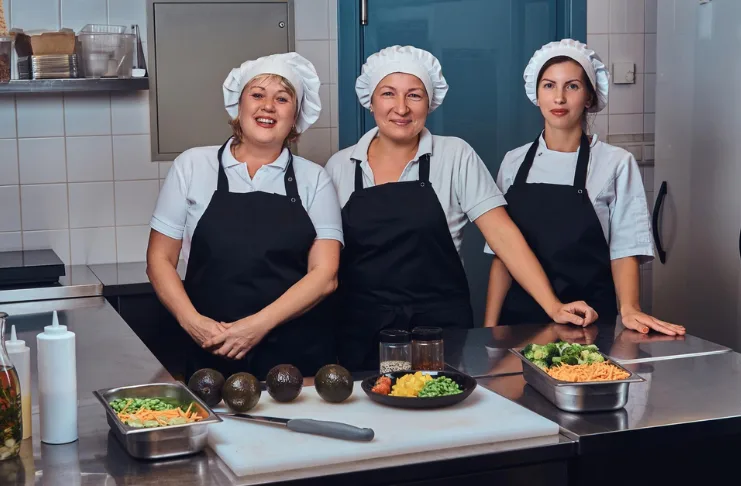
Setting up a cloud kitchen requires investing in essential kitchen equipment, including commercial stoves, ovens, refrigeration units, and food preparation tools. Depending on your menu, you may need specialized equipment such as grills, fryers, or baking ovens.
Key equipment essentials include:
- Commercial-grade cooking appliances for high-efficiency food preparation.
- Proper refrigeration and storage units to maintain ingredient freshness.
- Packaging stations with eco-friendly and spill-proof containers to enhance delivery quality.
Hiring the right staff is equally important. While cloud kitchens require fewer employees than traditional restaurants, you still need experienced chefs, prep cooks, and order handlers. If you plan to manage in-house deliveries, hiring dedicated delivery personnel is crucial.
Tips:
- Invest in quality equipment to ensure operational efficiency and food safety.
- Cross-train kitchen staff to handle multiple roles in case of high order volumes.
- Use automation tools like inventory management software to reduce waste and optimize ingredient usage.
5. Develop a Strong Online Presence

Since cloud kitchens lack a physical storefront, your brand’s online presence is the primary way to attract customers. Building a strong digital identity involves creating a user-friendly website, maintaining active social media accounts, and listing on major food delivery platforms.
Steps to Build an Online Presence:
- Create a Professional Website: Your website should include an interactive menu, an online ordering system, customer reviews, and contact details.
- Register on Food Aggregator Platforms: Platforms like Swiggy, Zomato, and Uber Eats provide a ready-made customer base and help increase brand visibility.
- Leverage Social Media Marketing: Use Instagram, Facebook, and TikTok to showcase behind-the-scenes kitchen operations, food preparation, and customer testimonials.
- Invest in SEO & Digital Ads: Optimize your online presence with local SEO strategies and Google Ads to rank higher in food-related searches.
Tips:
- Use influencer marketing to boost brand credibility and attract a wider audience.
- Encourage customer reviews and ratings to build trust and improve visibility on delivery platforms.
- Offer exclusive discounts for direct website orders to reduce dependence on third-party aggregators.
Launching a successful cloud kitchen requires a strategic approach, from market research to branding and digital marketing. By following these steps diligently, you can build a sustainable, profitable, and highly efficient cloud kitchen business.
Conclusion
The cloud kitchen model has rapidly emerged as a game-changer in the food service industry, offering entrepreneurs a unique opportunity to capitalize on the growing demand for food delivery. By focusing on technology-driven solutions, operational efficiency, and strategic marketing, cloud kitchens are well-positioned to thrive in an increasingly digital world. This innovative business model not only reduces overhead costs but also enables businesses to scale with agility, making it an attractive option for both new entrants and traditional restaurateurs seeking to adapt to shifting market dynamics.
As the industry continues to evolve, it’s clear that cloud kitchens will play a pivotal role in shaping the future of food delivery. According to a report by Allied Market Research, “The cloud kitchen market has experienced significant growth owing to the change in consumer preferences toward convenience and online food delivery services, which has helped boost demand.”
This reflects a growing consumer demand for convenience, providing a strong foundation for entrepreneurs looking to tap into this market. By leveraging technology, strategic marketing, and efficient operations, cloud kitchens can achieve long-term success. Whether starting from scratch or transitioning from a traditional restaurant, adopting the right strategies will ensure profitability and scalability in the competitive food business landscape.
Frequently Asked Questions
1. Do cloud kitchens make money?
Yes, cloud kitchens can be highly profitable due to lower overhead costs and high scalability. By eliminating dine-in expenses and focusing solely on delivery, cloud kitchens achieve better margins, especially when leveraging technology, data-driven marketing, and multiple virtual brands.
2. What is a cloud kitchen business?
A cloud kitchen business is a restaurant model that operates solely for online food delivery without a physical dine-in space. These kitchens rely on third-party delivery platforms or their own digital channels to serve customers efficiently at reduced costs.
3. What do cloud kitchens do?
Cloud kitchens prepare and cook food exclusively for delivery, optimizing their operations for speed, efficiency, and scalability. They serve customers through online platforms, focusing on streamlined production, digital marketing, and data-driven menu engineering.
4. What are the disadvantages of cloud kitchens?
Cloud kitchens face challenges such as high dependence on food delivery aggregators, intense competition, and limited brand visibility without a physical storefront. Additionally, ensuring food quality during transit and maintaining strong customer retention require strategic efforts.
5. What food is most ordered in cloud kitchens?
Popular cloud kitchen menu items include comfort foods like pizza, burgers, biryani, and pasta, as well as Asian cuisine, as well as healthy bowls and meal kits. The most-ordered items vary by region but typically align with high-demand, delivery-friendly meals.
6. What is the cloud kitchen concept?
The cloud kitchen concept revolves around a delivery-only restaurant model that eliminates dine-in operations to reduce costs and maximize efficiency. It relies on online food orders, strategic kitchen placement, and digital marketing to reach a broad customer base.
7. How do cloud kitchens make money?
Cloud kitchens generate revenue through online food orders, often operating multiple virtual brands from a single kitchen to maximize profitability. They optimize costs by choosing affordable locations, streamlining operations, and leveraging digital marketing to drive sales.
8. Can I open a cloud kitchen in the USA?
Yes, you can open a cloud kitchen in the USA, as the market is thriving due to the growing demand for food delivery. You’ll need to comply with local health regulations, secure kitchen space, and integrate with major delivery platforms like Uber Eats and DoorDash.
9. Can you do a cloud kitchen at home?
Yes, a home-based cloud kitchen is possible, but it must comply with local health and safety regulations. Many states require commercial-grade kitchens, so checking zoning laws and obtaining necessary permits is crucial before launching.





